Ruedi Thomi, Jonas Jäggy
Preparation is crucial when it comes to mountain sports – and that doesn’t just mean getting the right equipment. It’s critically important that you have the requisite knowledge, too. Sales advisor Zoltan shares five key tips for your adventure.
You’ve sorted out the equipment for your Alpine tour and selected your route with care. But sometimes, the success of your trip hinges on the nitty-gritty details. We’ve put together a few key tips for you below.
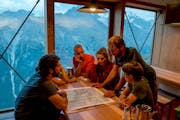
Preparation is the be-all and end-all
Thorough preparation for your Alpine tour is indispensable. Which summit are you looking to scale? How many metres of elevation do you need to cover? Where are the most difficult sections on the tour? Where can you descend in the event you need to call it quits? Take the following factors into account:
People: physical ability
Conditions: weather (snow line, thunderstorms, gales)
Terrain: e.g. changes in glacier crossings or the risk of rockfall
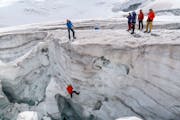
Training and knowledge
If you want to go Alpine touring, you need to complete a good training course to teach you how to move across the terrain independently – and safely. Above all, it’s crucial that you can handle the rope correctly. When should you extend the rope? And when should you shorten it? But that’s not everything you need to know: how can you work out where you are when fog suddenly rolls in? How can you assess the weather and conditions? How do you perform a crevasse rescue? Training is offered by various providers, including our partner Höhenfieber.
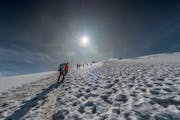
Tactics on the mountains
Less is more when it comes to your first few tours. Start with peaks at around 3,000 metres above sea level and gradually increase your elevation from there. Boost your fitness: you’ll only enjoy climbing a 4,000-metre mountain if you’re in good shape! Plus, it’s helpful to spend the night in a hut below the highest point at your route so your body can acclimatise to the altitude overnight. Begin your Alpine tours as early in the day as possible, as the conditions on the mountain will be safer then.
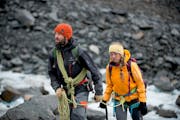
The right equipment
Your Alpine touring equipment needs to include ice picks, crampons and climbing harnesses – plus materials for a crevasse rescue. It’s also smart to take an insulated jacket with you: while it can quickly feel very warm indeed down in the valley in summer, the temperature at the summit can be close to freezing. Solar radiation is particularly strong on glaciers, so suncream is crucial. Don’t forget the undersides of your arms and your nose! They’ll burn particularly quickly thanks to the reflection.
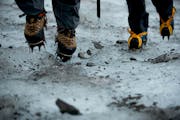
Glacier technique
Walking attached to a rope and with crampons on your shoes is different from normal hiking. The crampons’ sharp teeth will quickly get snagged on your trousers, and a misstep can have fatal consequences. Take small, wide steps for safety. Plus, you need to ensure the rope is the right length: use a long, extended rope on flat sections and shorten this when you’re walking on steep firn. The rope always needs to be taut – the risks of using a loose rope outweigh the rewards.
Alpine touring equipment
Share the articleFive handy tips for your Alpine tour
- Free shipping from CHF 99
(With the TransaCard always free of charge)
- Secure payment with Twint, Visa and more
- 14 days cancellation right






